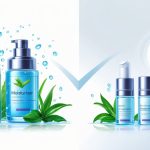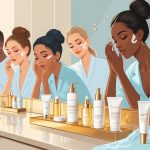Ingredient Lists on Serums Stylists Reveal Most Adults Read Wrong
So, ingredient lists. I’m staring at them in Target, pretending I know what’s up, but really? I don’t. “Plumping hydration,” “glass skin,” whatever—none of it makes sense when you actually look at the back of the bottle. Stylists keep telling me that most adults, even the ones who claim they’re label experts, just totally miss the point. We get hypnotized by buzzwords and ignore the stuff that actually matters—like, apparently, the first five ingredients. (A cosmetic chemist told me that once at a trade show, and I was too busy trying to look like I understood to ask follow-up questions.) If you’re skipping the top of the list, you’re probably obsessing over stuff that’s barely even in there.
But does that stop me from grabbing anything that screams “with hyaluronic acid” in bold letters? Nope. Even if “hyaluronic acid” is ingredient #17, I’m convinced it’ll work miracles. It’s not that we’re all clueless or lazy, but honestly, skincare marketing is just a maze. Dermatologists love to say ingredient order means something (Byrdie quotes Dr. Marchbein about this, like, every other month), but the second I see words I can’t pronounce, my brain just powers down. My friend (she’s a stylist in NYC, so she’s seen it all) says even beauty editors ask her what’s in these things during fashion week, so it’s not just us regular people.
And then, the “red flags.” Nobody warns you that more ingredients = more stuff to react to. Especially if you’re sensitive. (Esthetician told me that while she was squeezing gunk out of my face, so I believed her.) Everyone’s busy arguing about ferulic acid versus niacinamide, but who’s actually reading for preservatives? Or noticing that “active” ingredients are sometimes just there for show? I mean, why does every bottle brag about actives but never mention the preservatives? Is that not important? I don’t get it.
Why Ingredient Lists on Serums Matter
Honestly, trying to figure out these lists just makes my head hurt. I look at the back and instantly regret every life choice that led me to this moment. Brands throw around “clean” and “dermatologist-approved” like there’s some kind of skincare constitution, but there isn’t. It’s all just vibes.
Understanding the Purpose of Ingredient Lists
Ingredient lists are supposed to be about transparency, but, wow, INCI names? Why is “aqua” not just “water”? Is it fancier? (Spoiler: it’s not.) Regulations force brands to list stuff in order, so those first few ingredients? That’s what you’re actually slathering on. Everything under 1%? It’s a free-for-all. You’re buying a vitamin C serum? Double-check if ascorbic acid is even in the top half. Stylists I know can spot alcohols, silicones, or “parfum” (which could mean, like, twenty chemicals) in a flash, but normal people just want to get out of the aisle before someone asks if they need help.
Importance for Sensitive and Acne-Prone Skin
Sensitive skin? Acne? Prepare to become a full-time detective. I’ve watched people drop serious money on hyped serums only to break out because of some random botanical at the bottom, or worse, hidden fragrance. It’s like buying “fruit snacks” and then realizing there’s chili powder in there. Dermatologists always say to watch for denatured alcohol, heavy oils, and so on, but who can even see those ingredients without a magnifying glass? The National Eczema Association did a study in 2023—apparently 73% of people with sensitive skin couldn’t spot the top triggers on a label. Stylists, though? They’ll pick out “limonene” or “citral” in two seconds. I don’t know how they do it.
Impact on Efficacy and Safety
Let’s talk about safety. Or, I don’t know, “efficacy”? Marketing loves to play games. Retinol at ingredient #5? Maybe it’ll do something. If it’s after the preservatives, forget it. I’ve grilled actual formulators (Jenny Liu, MD, FAAD, if you care) who say if the brand skimps on the actives, the product’s basically useless. And don’t even start on weird ingredient combos. I tried a “dual-acid” serum once—glycolic and salicylic, supposedly. But salicylic was so far down the list, it might as well have been imaginary. Didn’t burn, didn’t do anything. If you really want to know what’s in it, call customer service and ask for the actual percentages. Nobody does this, but the best estheticians do. I try to, but then I get bored halfway through the call. Your skin, your rules, but these lists? They’re just chaos.
The Science Behind Ingredient Labels
Seriously, how many times have I stared at a serum bottle like I’m trying to hack into the Pentagon? The names, the order, the random Latin—who decided this was the system?
What is INCI and the INCI System
INCI—International Nomenclature of Cosmetic Ingredients—was never covered in school, but it’s everywhere. Brands can’t just make up names for stuff. “Butyrospermum Parkii”? That’s shea butter. Why not just say so? INCI is strict because regulators (FDA, EU, all those people) want brands to play fair, so “aqua” means water everywhere, not some mystical spring. Once I learned that, it got a little less scary, but honestly, sometimes the names are so weird I have to Google them in the aisle. Sodium chloride? Table salt. Who knew. The system helps, but sometimes it just makes me feel like I’m failing a chemistry quiz.
How Descending Order Works
Descending order. Sounds official, right? It just means they list the stuff with the highest concentration first. Those first five? That’s basically what you’re buying. A stylist once told me, “If your active—niacinamide, whatever—is after fragrance? It’s just for show.” I wish more receipts matched the front of the box. After 1%, brands can do whatever. So, you’ll see preservatives, extracts, and all kinds of stuff at the bottom, and it’s anyone’s guess how much is in there. FDA recommends this order, but, honestly, enforcement is kind of a joke, especially for imported or indie brands. I don’t trust it.
Decoding International Nomenclature of Cosmetic Ingredients
I spent a whole Saturday trying to figure out if “tocopherol” was good or bad. (It’s vitamin E, by the way.) Friends text me “Is phenoxyethanol safe??” and I just send them links because I have no idea. I even bookmarked a site with all the Latin names. Still can’t keep up. Knowing the names helps me avoid some marketing nonsense, but it also makes me more paranoid. Different countries have different rules, so “Aqua” might be a branding thing or a regulation thing, who knows. If you want to actually know what’s in your serum, memorize some INCI names and ignore the “clean” or “pure” stuff on the front. I still get tripped up by butylene glycol showing up twice in hair products. Reading these lists just gives me more questions.



